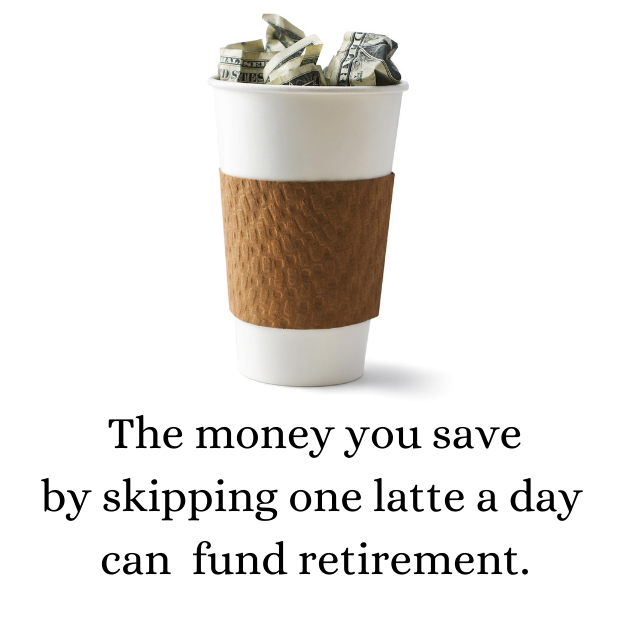A Cupful of Good Sense.
We all know (or have used) this useful little bit of wisdom to motivate employees to save more:

This commonsense comparison shows how very small sacrifices can be leveraged into future financial well-being. It uses a popular purchase, straight-forward math and solid financial advice to educate and motivate. But do we know if this argument actually persuades people to save more?
Probably not. Communicators are often not able to be data driven. There are many historic and practical reasons why this is so. Internal budgetary constraints, imprecise measurement tools and the difficulty in pinpointing attribution within any individual’s psyche are substantial challenges to proving the effectiveness of an appeal.
Instead, we know our audiences, their needs and wants, and how to gather and present our facts with reason and wit. We’ve done it this way since ancient Greeks. The usefulness of the coffee-a-day analogy was obvious and brilliant. So it caught on. It turns out, it’s also scientifically provable.
Bite-size is easier
On a recent episode of Choiceology (a Charles Schwab podcast focused on personal economic choices), Katy Milkman looked at the merits of breaking sometimes overwhelming challenges into smaller more manageable tasks. Whether it be learning a new skill, rehabilitating from an athletic injury, building your business, or saving for retirement, dividing any large task into smaller segments is a winning strategy for creating initiative and staying on task.
Hal Hershfield, a professor of marketing and behavioral decision-making at UCLA, was a guest on that episode. Hershfield created a study around how reframing the same goal might change a person’s willingness to engage with change. Using a personal finance app (linked to users’ bank accounts), Hershfield presented an automated savings program framed as three distinct offers.
Users were offered one of the following savings plans and responded accordingly:
- Contribute $150 a month. (7% signed up for this offering.)
- Contribute $35 dollars a week. (11% signed up for this offering.)
- Contribute $5 a day. (28% signed up for this offering.)
Four times as many people signed up for the $5-a-day plan, even though the amount of money taken out each month was the same across all three plans. Why?
Hershfield concluded that people likely think about money in distinct “buckets.” The monthly offering competed with the most expensive items in most budgets, like rent and car payments. Whereas the $5-a-day bucket competed with any number of small insignificant purchases, like a cup of coffee. How significant the sacrifice “feels” to the saver is the most important driver.
This is a useful insight for employee communicators. We offer employees pathways to wellness, health, continuing education, savings and more. Accomplishing these big, life-changing goals usually requires personal sacrifice on the front end and a payoff later. Breaking those goals into bite-sized actions can help employees find the motivation necessary to get started.
Good to know
It’s good to know that our methods have merit. We understand that carefully framing an organization’s programs in ways that appeal to employees works. And works well.
It’s also good to know more. Employee communicators can benefit from work being done in fields like positive psychology, behavioral economics, and organizational psychology. The more we know, the better we will be at presenting wellness programs, benefits, retirement options, etc. with all the complexities of available choices in ways that both inform and motivate employees.
